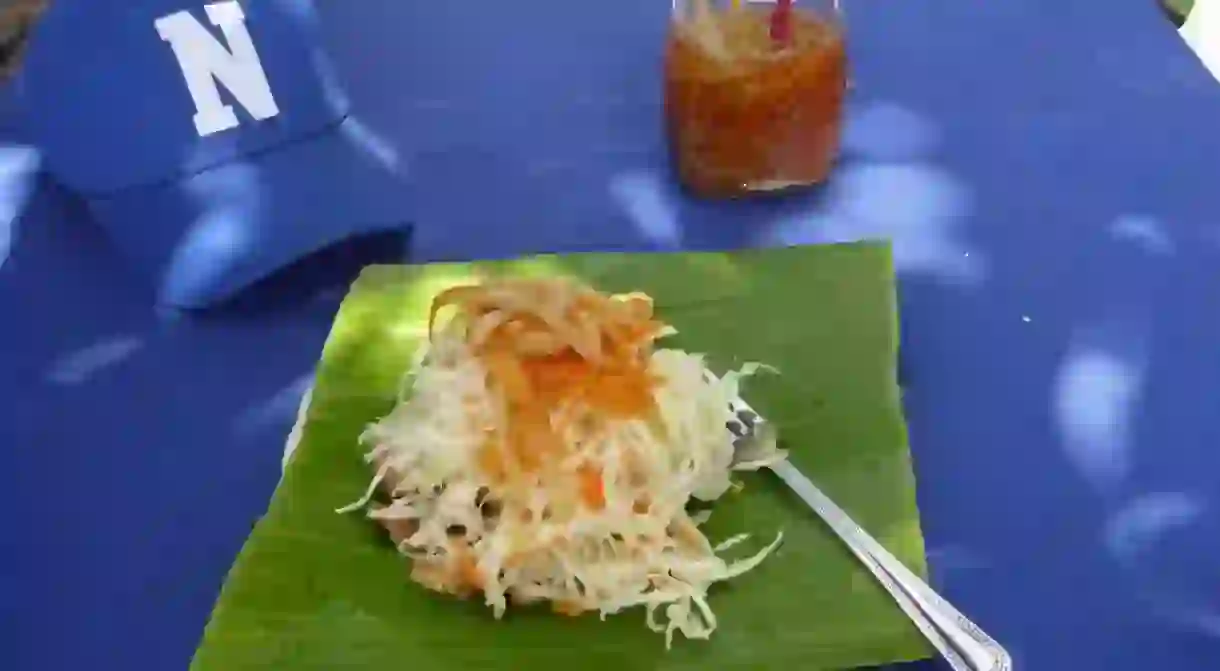A Brief History of Vigorón, the Signature Dish of Granada, Nicaragua

The Nicaraguan city of Granada is not just the oldest – and arguably the coolest – colonial city in Central America, it’s also the home of vigorón, a moreish mini-mountain of boiled yuca, pork rinds, and cabbage slaw that was created in 1914 by a street vendor known as La Loca (The Crazy Woman). Nowadays, anybody who visits Granada would be crazy to miss out on this lip-smacking snack, which the locals eat for breakfast, lunch, or dinner. So how did a humble street snack sold at neighbourhood baseball games become the signature dish of a grand city like Granada?
Vigorón is now so famous in Nicaragua that it is considered an iconic national dish, and even Costa Rica has tried to lay claim to it. But its origins are firmly tied to the historic city of Granada, where the tradition of combining soft starchy yuca (cassava), crunchy chicharrones (pork rinds), vinegary chopped cabbage, and spicy chilli continues to this day.

The story starts in 1914 when Maria Luisa Cisnero Lacayo – known affectionately as La Loca (The Crazy Woman) – was looking for a name to make her trademark dish stand out from those being hawked by other local vendors. She had been selling her street food dish of yuca and pork rinds at local baseball games with some success, but wanted a catchy name to boost sales.
Then, one day, her eyes fell on the dramatic image of a man wrestling with a huge bull in an advert painted on a wall for a cure-all tonic called Vigorón. The slogan for the tonic was “Vigorón Vigoriza!” (Vigorón Invigorates!), and when La Loca applied it to her trademark street snack it caught on.
Soon all the street vendors wanted to sell vigorón, and a new dish was born.
Currently, the most famous vigorón vendor in Granada is Francisco Javier Gomez Torres, better known as El Gordito (The Little Fat Man), who runs a food kiosk in Granada’s elegant Central Plaza in front of the city’s iconic mustard-yellow cathedral.

Ask the locals where the best vigorón can be found, however, and they’ll direct you to the Municipal Market, a few bustling blocks away, and the corner stall run by La Pelona (The Bald Woman), whose real name is Doña Aura Morales.
According to La Pelona, the secret of vigorón’s success is that it contains a perfect combination of flavours and textures and you can eat it with your fingers. The reason why it doesn’t taste the same in other places, she insists, is because in Granada they make the slaw with slices of a tangy fruit from the cucumber tree called mimbro, and add hot-but-tasty chile cabro to the vinegary chilli sauce.
Also, contrary to popular belief, La Pelona says vigorón is not served on a plantain leaf but a special, slightly softer leaf called nea, or nella, which is gathered in the nearby town of Malacatoya.
Another popular local character, La Perla (The Pearl), has been selling vigorón on the corner of Calle Atravesada and Calle Corrales, near the city’s famous Choco Museo and spa for nearly 20 years.
“The reason why you should only eat vigorón in Granada,” La Perla says, “is because we are very proud of our culinary traditions and stay true to the original. Nobody else can make it the way we do. Nobody.”
And Nicaraguans are fiercely proud of their traditions. A recent TV report from Mexico suggesting that vigorón is essentially a Costa Rican dish sparked such online outrage from Nicaraguans that the Mexican news channel was forced to take down the video.
As La Perla says, “If you don’t eat vigorón in Granada then you haven’t really visited.”














